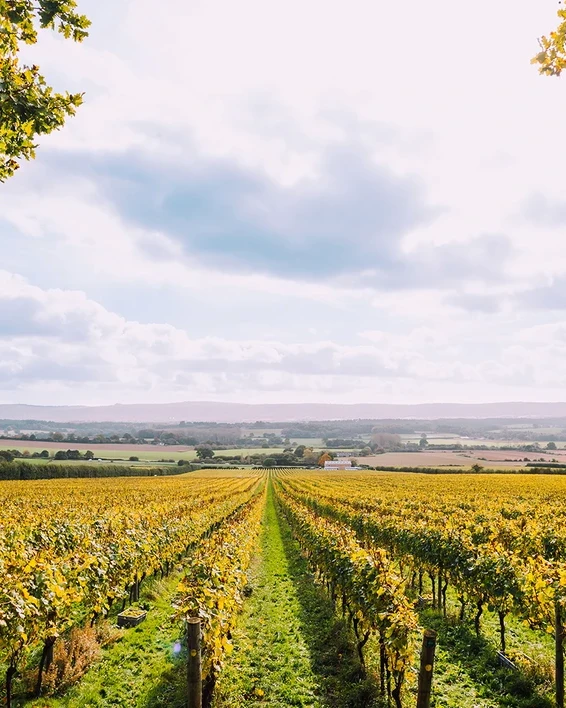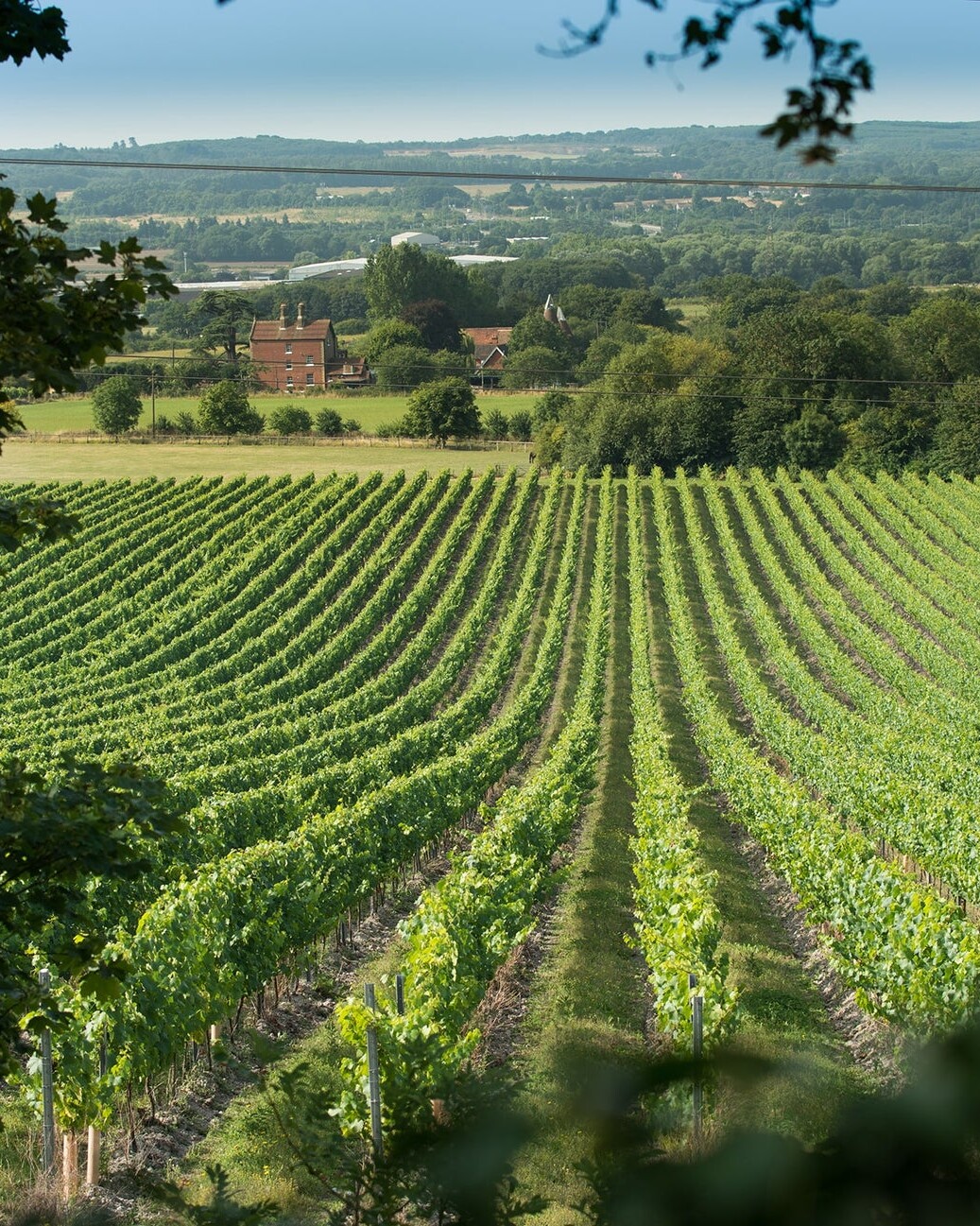It is easy to forget that England is an island. Our coastline wraps around more than 11,000 miles, yet when people think of English wine, they picture gentle inland hills and tidy vines in the countryside. The truth is that many of our most exciting wines are now made within sight, smell, and sometimes sound of the sea. The coast is shaping the next chapter of English wine, and it tastes every bit as fresh as you would imagine.
Spend a few days driving through Kent, Sussex, or Dorset, and you start to notice a pattern. Vines appear where the countryside gives way to sea air, where chalky hills meet salt spray. These are not random plots of land but deliberate plantings in some of the most geologically interesting corners of Britain. Coastal vineyards are not a trend; they are the quiet revolution behind the precision and energy that define modern English wine.
Salt, Sunlight, and Soil
The best vineyards in southern England share a few key traits. They sit on chalk or limestone, they face south, and they are open to the cooling breezes that come off the Channel. That combination keeps acidity high and flavours bright, while the salt in the air gives the wines a subtle mineral lift. It is not literal saltiness, but a kind of coastal freshness that you can taste on the finish.
This influence is particularly powerful for sparkling wines. Producers like Gusbourne near Romney Marsh, Nyetimber in West Sussex, and Langham in Dorset all work with vineyards that sit close enough to the sea to feel its effect. The cool maritime climate means slow, even ripening, which is perfect for Chardonnay and Pinot Noir. The result is wines that are lean, precise, and full of tension. They have energy without sharpness, depth without heaviness.
The Kent and Sussex Connection
Kent and Sussex have long been at the centre of English wine, but the coastal edge is where things get interesting. The chalk ridge that runs from the South Downs all the way into France’s Champagne region does not stop at the border. It continues right under the Channel, resurfacing in the vineyards around Ditchling, Rye, and Folkestone. That geological link is more than a fun fact; it is one of the reasons English fizz has become so good.
At Simpsons Wine Estate near Canterbury, winemakers Ruth and Charles Simpson talk about “capturing the coastal light.” Their vineyards sit just twelve miles from the sea, and that proximity gives their wines an unmistakable brightness. The same goes for Chapel Down in Tenterden and Westwell in Kent, both of which produce wines that seem to shimmer with energy. If Champagne is a whisper, Kentish fizz is a confident conversation.
Dorset’s Limestone Edge
Head west and you find another cluster of coastal vineyards thriving on the Jurassic Coast. Dorset’s limestone and flint soils, combined with steady sea breezes, have created the ideal conditions for sparkling and still wines alike. Langham Wine Estate, a short drive from Weymouth, has been collecting international awards for its textured, complex wines. They are proof that the south coast can deliver the same finesse and longevity as Champagne, but with its own distinct personality.
Further west, Lyme Bay Winery in Devon is crafting still wines that show what a coastal influence can do for Bacchus and Pinot Noir. There is a crispness to them that feels almost saline, as though the air from the sea has found its way into the bottle. You notice it most when you drink them with seafood: crab, scallops, or salt-baked fish. They seem made for each other.
The Sound of the Sea in a Glass
There is a sensory honesty about coastal English wine. The flavours match the place. You can stand in a vineyard on a breezy day, hear the gulls, taste the air, and then recognise that same brightness in the wine later. It is the same story that makes Chablis or Santorini Assyrtiko so distinctive; the environment speaks through the glass.
This connection between land and sea is becoming one of the hallmarks of English wine identity. It moves us past the novelty of “surprisingly good British wine” and towards a defined style: clean, mineral, focused, and expressive. It is a style built on restraint rather than opulence, precision rather than power. It fits our food, our climate, and our character perfectly.
The Coastal Future
Looking ahead, more producers are chasing this coastal advantage. New vineyards are being planted along the Sussex and Kent coastline, and some as far north as Norfolk, where drier, sunnier conditions are giving growers renewed confidence. The focus is on sustainability, biodiversity, and wines that reflect a genuine sense of place. As global temperatures climb, these coastal zones might become the ideal balance point for English viticulture.
There is something quietly poetic about that. The same sea that defines our national identity is now helping define our wine. The breeze that whips the coast also cools the grapes. The salt spray that hits the cliffs is the same one that gives the wines their clarity. It all feels connected.
A Taste Worth Seeking Out
If you want to experience this for yourself, look for wines that mention coastal vineyards on the label. Many estates are proud to reference their proximity to the sea. A few names to look out for: Simpsons Chalklands, Langham Culver Classic Cuvée, and Lyme Bay Shoreline. Each captures a different coastal character, but they share the same energy and freshness that makes English wine so exciting right now.
And if you ever find yourself near one of these estates, book a tasting. There is nothing quite like drinking wine within sight of the sea that shaped it. It reminds you that English wine is not a copy of anywhere else. It is its own story, written between vineyard and tide.
November 8, 2025
The Best English Sparkling Wines for Christmas 2025
Read More

August 20, 2025
Why Venues Should Pour English Sparkling Wine, Not Prosecco
Read More




